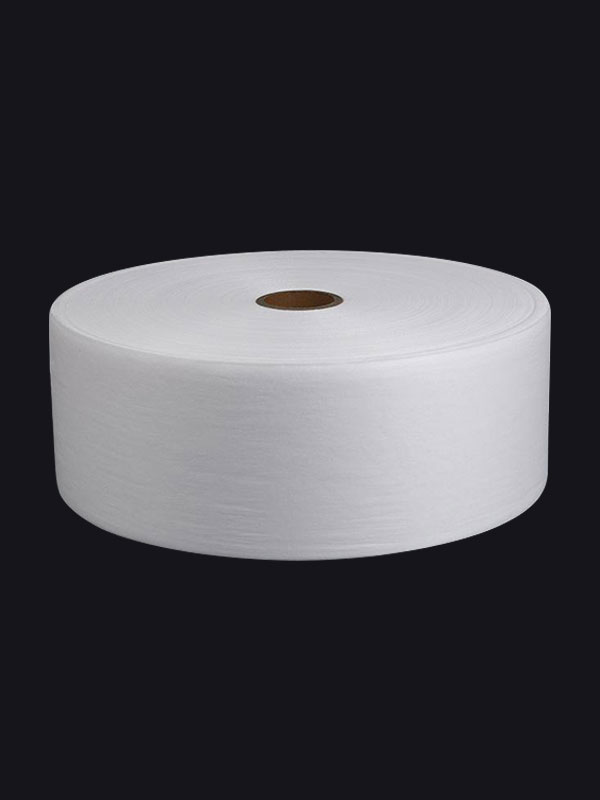Hot Air Through Printed Nonwoven fabric is a specialized material that stands out due to its unique production process, structural properties, and performance characteristics. These features make it particularly suitable for applications requiring high absorbency, comfort, and breathability, such as hygiene products.
Production Process
Hot Air Process: The hallmark of Hot Air Through Printed Nonwoven fabric is its production using the hot air process. This technique binds fibers together through the application of heat, rather than relying on chemical adhesives or mechanical bonding. The result is a fabric with enhanced softness and fluffiness.
Hot Rolling: After the initial hot air treatment, the fabric undergoes hot rolling. This step not only increases the material’s structural integrity but also imprints a specific texture or pattern, often a honeycomb structure, that contributes significantly to its functional properties.
Texture and Structure
Fluffy and Soft: One of the standout features of this fabric is its exceptional softness and fluffiness. The hot air process inherently creates a gentle, cushioned texture, making the fabric ideal for products that come into direct contact with the skin, such as diapers and sanitary napkins. This softness enhances user comfort and reduces the risk of skin irritation.
Honeycomb Structure: The hot rolling process often results in a honeycomb structure, which is a key differentiator. This unique pattern boosts the fabric's ability to absorb and evenly distribute moisture, ensuring effective performance in moisture management.
Performance Characteristics
High Absorbency: The honeycomb structure and the overall design of Hot Air Through Printed Nonwoven fabric allow for high absorbency. This capability is crucial for hygiene products, where rapid and efficient moisture absorption is essential to maintain dryness and comfort.
Good Air Permeability: Another critical characteristic is the fabric’s breathability. The nonwoven nature allows air to pass through easily, which helps keep the skin dry and comfortable. This is particularly important for preventing rashes and irritation, especially in products used for extended periods, like diapers.
Water Absorption and Retention: The fabric typically features a multi-layer structure that includes an absorbent layer, leak-proof layer, diversion layer, and a hot air through bottom film. This complex structure ensures not only the absorption and retention of moisture but also the prevention of leaks and reverse osmosis, enhancing the reliability of hygiene products.
Multi-layer Structure
Absorbent Layer: This layer is engineered to quickly draw in and retain moisture, ensuring that the surface remains dry.
Leak-proof Layer: Positioned beneath the absorbent layer, this component prevents liquid from escaping, enhancing the product's reliability.
Diversion Layer: This layer helps to evenly distribute the absorbed liquid throughout the absorbent layer, optimizing the fabric’s overall performance.
Hot Air Through Bottom Film: This bottom layer adds structural support and additional leak-proofing, contributing to the product's effectiveness.
Printing Capabilities
Aesthetic and Functional Printing: The ability to print on the fabric adds both aesthetic and functional value. Printed designs can enhance the product’s appeal and provide functional benefits, such as indicating zones of higher absorbency or usage instructions.
Customizable Designs: The printing capability allows for customization, which is beneficial for branding and market differentiation. Manufacturers can tailor designs to meet specific market demands and consumer preferences.

Material Composition
Fiber Types: Typically, Hot Air Through Printed Nonwoven fabric is made from synthetic fibers such as polypropylene or polyester. These fibers contribute to the fabric's durability and functional properties.
No Chemical Binders: Unlike some nonwoven fabrics, this fabric does not rely on chemical binders, making it potentially safer and more skin-friendly. The absence of chemical adhesives also reduces the risk of allergic reactions and skin irritation.
Application Specificity
Targeted for Hygiene Products: While many nonwoven fabrics serve a broad range of applications, Hot Air Through Printed Nonwoven fabric is specifically engineered for hygiene products. Its superior absorbency, softness, and comfort make it ideal for diapers, sanitary napkins, and other similar products.

 English
English 中文简体
中文简体 Español
Español






